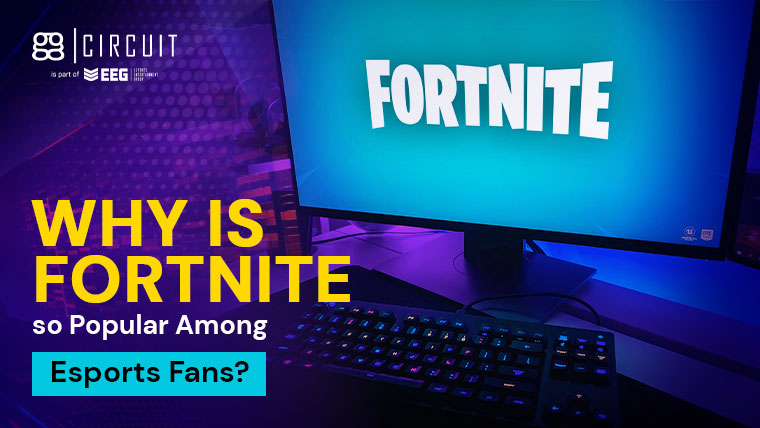When Did Esports Start and How It Changed Competitive Gaming
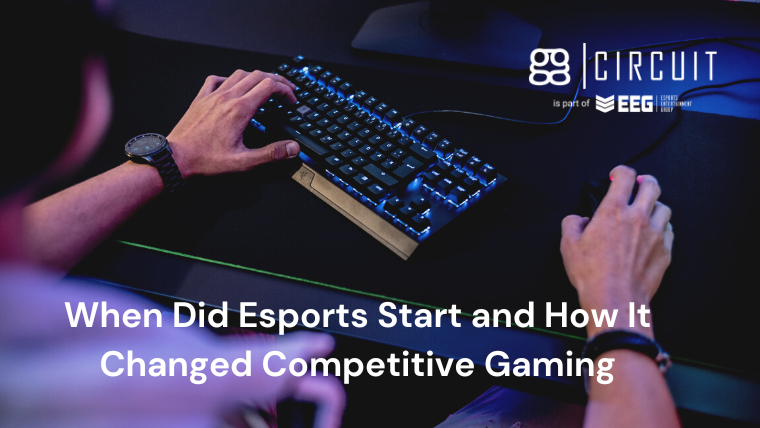
Did you know that the history of esports can be traced back all the way to the 50s? Although “esports” wasn’t a term yet at the time, there have been many events that go back decades that led to what we now have today.
To give you an idea of how it all began and changed competitive gaming in the modern world, let’s take a look back at how esports started.
- When Did Esports Start?
- The 50s: Rise of Computer Gaming
- The 60s: Beginning of Esports
- The 70s: Arcade Games and Console Gaming
- The 80s: Playing for the Highest Score
- The 90s: Introduction of Major National Gaming Competitions
- The 20s: Video Games Become Even More Popular
- 2010 and Beyond: Better Access to Esports Competitions and the Rise of Esports Streaming
- Who Created Esports?
- What Was the First Esports?
- How Did Esports Become So Popular?
- Where Are Esports Most Popular?
- What Is the Biggest Esports Right Now?
- Who Is the Best Esports Player?
- Is Esports a Good Career?
- Conclusion
When Did Esports Start?
Many debates continue to go on to this day on when the specific dates for esports were. Consider the timeline of historical esports events we’ve prepared below to help you understand how competitive video gaming came about.
The 50s: Rise of Computer Gaming
The early days of playing a video game competitively go as far back as 1952. In that fateful year, a computer scientist named Alexander Shafto Douglas began his work on a doctoral thesis.
His thesis in Cambridge was about the interaction that humans had with computers. During this time, he decided it would be a great idea to transform the XOX game into a game you can play on a computer. The problem here was that the human player could only go up against the computer and was always the one who determined who started.
 A modern re-implementation of Tennis for Two" - Image: HeatSync Labs
A modern re-implementation of Tennis for Two" - Image: HeatSync Labs
It was in 1958 when the first actual multiplayer game took place. The game was known as “Tennis for Two,” which allowed individuals to play a match against one another. The video game used an early variant of the joystick that allowed users to hit the ball and adjust its trajectory.
Many experts consider this title to be the reason for the birth of esports.
The 60s: Beginning of Esports
Although esports tournaments didn’t exist at this period, the seeds for its beginning had already been sown. A game called “Spacewar!” was created in 1962 and was played by people on a PDP-10 computer. It was made by a computer scientist, Steve Russel, and some of his colleagues at MIT.
In the game, two players matched against one another using their own spaceships. The spaceships of each player were given a limited supply of ammunition and fuel while having to battle against the planet’s gravitational field.
The title was considered the first digital computer game and is considered by many as one of the top most influential computer games of all time. It would be another ten years before a tournament on Spacewar would be held. However, this would be considered the first esports tournament in the world.
This esports event didn’t have prize money for the winners but granted them instead a 1-year subscription to the Rolling Stones magazine.
The 70s: Arcade Games and Console Gaming
Magnavox Odyssey, the first game console that allowed players to connect directly to a TV, was introduced in the United States in 1972. Although awkward to use, the product was revolutionary for its time and opened the idea of digital gaming to the public.
Arcade games also started seeing success at this time, especially with games like Pong being played in numerous locations. However, official video game competitions only became a thing once games started having high score lists.
The arcade game Sea Wolf was the first one to implement a high score in 1976.
The 80s: Playing for the Highest Score
Asteroids and Starfire were the first two arcade machines that allowed players to compete for the highest scores. Permanent high score lists in these games using personal name codes promoted competition amongst users. In addition, these lists served as a way to measure one’s skill.
In 1978, Atari paved the way for the first major esports tournament by introducing a video game title called Space Invaders. It became so popular that they hosted a Space Invaders Championship event the following year.
More than 10,000 gamers competed to win a prize, and on October 10, 1980, William Salvador Heineman became the winner of this challenge. This tournament laid the foundation for video game competitions that could take place nationwide.
The concept of holding video game tournaments was further cemented when the first Tron movie was released. Despite having only a $17 million budget, this cult classic brought in $50 million at the box office due to its popularity.
In 1982, Walter Day created Twin Galaxies, Inc, wherein he designed a database consisting of records obtained from more than 100 video game arcades. The database became known as the Twin Galaxies National Scoreboard and was used to make all scores in arcade games official. It also led to competition between the top players throughout the United States.
The same year also saw the introduction of STARCADE!, a TV game show that featured contestants playing various arcade games. The goal of the participants was to obtain the highest total score. It also included trivia related to these video games.
The show had four seasons, with its winners competing for the highest ranks in arcade games along with other prizes. The United Kingdom also had a similar show called First Class, which was introduced at about the same time. This was proof that interest in esports was growing not only in the US but also in other places.

In 1983, William Day toured the United States with Billy Mitchell, a Donkey Kong player with the highest overall score the year before. The tour also included a selection of other skilled arcade players. During the summer of that year, Day introduced the first national video game team in the US, with him as the team captain.
But, the end of arcade dominance was already at hand. This became apparent when consoles like the Nintendo Entertainment System and Sega Master System were released to the public.
The year 1988 became a milestone period for online and PC gaming in general. This was the time when Netrek was introduced, one of the first games played on the internet. It also became known as the first multiplayer online battle arena (MOBA) in esports history.
Netrek was a combination of strategy and shooter that up to 16 players could play in real time. The goal of the game was to capture all of the opposing team’s planets in order to win.
The 90s: Introduction of Major National Gaming Competitions
By the time the 90s came in, a growing number of people in the United States had started to gain interest in large national gaming competitions. The widespread internet access to the public further facilitated this growth.
Nintendo was already the new powerhouse in the world of console gaming thanks to its highly successful gaming system. It introduced the Nintendo World Championships in 1990, featuring a triathlon of games with the titles Tetris, Rad Racer, and Super Mario Bros included in a bundle.
The whole tournament was held in 29 cities throughout the US, with participants competing to win various prizes, including a $10k savings bond, 1990 Geo Metro convertible, and Nintendo systems.

The next couple of years saw the release of fighting games such as Street Fighter II and Mortal Kombat. These titles allowed players to compete directly with one another instead of simply reaching the highest ranking in a scores list.
Such a milestone laid the foundation for player versus player (PvP) gameplay.
In 1993, a first-person shooter (FPS) by the name of Doom became one of the most popular online competitive multiplayer games that people at that time played.
That same year also saw Blockbuster Video, a popular video store chain at that time, host the first Video Game Challenge. This event required competitors to achieve a high score at their local Blockbuster by playing Super Nintendo or Sega Genesis titles.
The state champions were rewarded with a free television along with a trip to Florida, where they would compete for the finals. The grand prize winner was then given a free trip to San Francisco so they could tour the offices of Capcom, EA, and GamePro.
The Nintendo World Championships happened in 1994 and were designed to promote their new SNES system. This tournament followed the same format as the previous events in the past years.
The year 1997 saw the foundation of The Cyberathlete Professional League (CPL) and had its first league game of Quake played by its members.
The 2000s: Video Games Become Even More Popular
During this decade, the improvement in internet speed and access led to online video games becoming even more popular. In addition, more and more people were gaining access to their own gaming PCs, which eventually became more affordable and powerful.
South Korea started improving its broadband internet networks, resulting in LAN gaming centers where gamers played all sorts of video games. This was also the reason why the country became a hub of esports in Asia, particularly after the first World Cyber Games (WCG) was held in Seoul in 2000. The country was also where the term “esports” was first coined.
In 2002, Major League Gaming (MLG) was founded and became the first video game console league that was ever televised. One of their most popular esports events was the Halo 2 Pro Series in 2006.
Perhaps the most iconic moment in competitive gaming history is the “Evo Moment #37” between Daigo Umehara and Justin Wong, which occurred at Evolution Championship Series 2004. Umehara was able to parry 15 strikes in a row with only 1 pixel of health remaining, which was impossibly difficult to achieve.
By 2006, the growing popularity of esports continued to rise with companies like FUN Technologies holding world championship events that offered $1 million in prize money for its grand winner.
2010 and Beyond: Better Access to Esports Competitions and the Rise of Esports Streaming
When the 2010s rolled in, people were starting to find it easier to watch and participate in esports competitions. In addition, platforms like Twitch also allowed streamers to showcase their skills in popular esports games while being recognized as professionals within their field of expertise.
In 2010, Nintendo Held the Wii Games Summer, which was a tournament that lasted for more than a month and had over 400,000 participants. Among the most popular esports games of that year was Super Smash Bros Brawl, together with its predecessor, Super Smash Bros Melee.
The year 2011 saw the live streaming platform Twitch go live, which also became the primary way for gamers to connect to their fans by showcasing their gameplay online. In addition, Twitch allows players to earn money even in the comfort of their homes so long as they can build an active audience. This was made possible through the sponsorship and advertising deals available on the platform.
Twitch started to grow in popularity in the coming years. The most-watched video game streams on the platform were League of Legends and Dota 2. Even colleges and universities had begun offering athletic scholarships to players interested in esports.
In 2013, the United States recognized all esports players as professional athletes, allowing even those from other places to enter the country through the appropriate visas. The same year also saw the Season 3 World Championship of League of Legends sell out the Staples Center with more than 15,000 fans in attendance along with 32 million viewers on Twitch.
By 2015, esports in America was already increasing in popularity rapidly. The founders of Esports Arena introduced their first location in Santa Ana, California, a 15,000-square-foot venue that can seat more than a thousand players for their events. The facility boasts a professional studio, production rooms, meeting areas, a kitchen, and a bar.
With esports organizations growing in traction worldwide, the International Olympic Committee mentioned that they might eventually allow esports to become an official sport in the Olympic Games.
Sign up for ggCircuit Updates!
Who Created Esports?
It can be said that Atari, the third-party company for Nintendo, was the primary entity responsible for bringing esports to the masses. The biggest reason for this was because they were the leading figure to host the Space Invaders Championship in 1980.
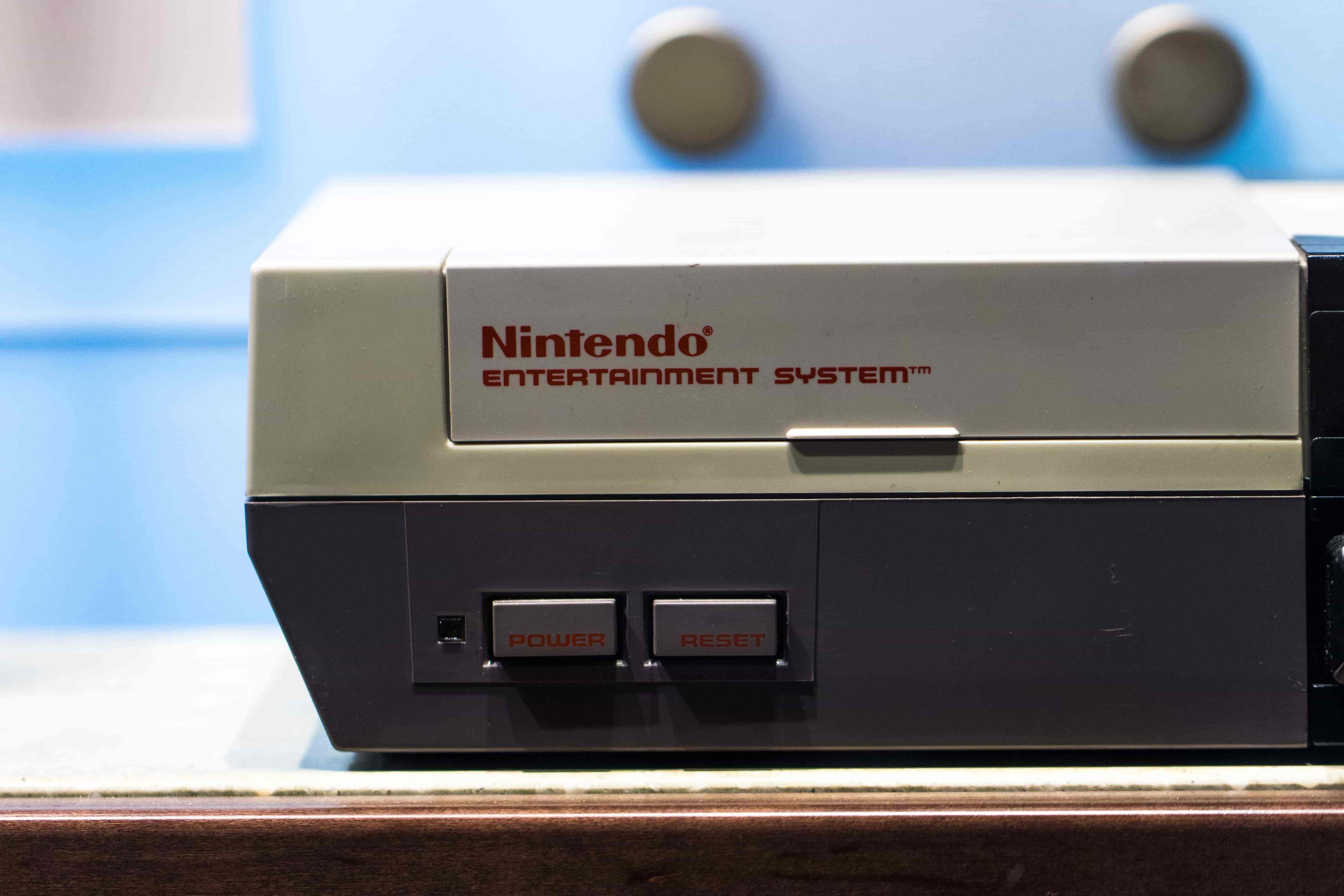
The esports event is known today as the earliest large-scale video game competition. It brought in more than 10,000 participants throughout the United States, pushing competitive gaming and making it into a mainstream hobby.
What Was the First Esports?
The first known video competition that would later be recognized by many as “the first esports” would be the Spacewar event that took place on October 19, 1972, at Stanford University. The students on the campus were invited to join an “Intergalactic Spacewar Olympics” wherein the grand prize for the winners would get a year’s worth of subscription to Rolling Stone magazine.
Bruce Baumgart won the 5-man free-for-all tournament, while Tovar and Robert E. Maas bagged the team competition.
Besides Spacewar, the following are among the first esports game titles:
-
Street Fighter
-
Super Smash Bros.
-
Marvel vs. Capcom
-
Doom
-
Counter-Strike
-
Call of Duty
-
Unreal Tournament
How Did Esports Become So Popular?
As mentioned above, esports was around as early as the 1950s and started taking shape once it reached the 70s. Both communities and companies like Nintendo, Atari, and Sega have contributed significantly to making esports what it is today.
But there are also several factors as to why the industry has continued to see a steady rise in popularity throughout the years. Let’s take a look at the main reasons why esports is popular among people of all ages today.
It’s Competitive Just Like Any Other Sport
Competition is one of the main reasons why people love tuning in and taking part in esports. It’s just like any other sport where competitiveness drives participants to do their best.
Today, it’s far easier to follow and become a supporter of a specific esports player or team. In addition, platforms like Twitch and YouTube allow people from anywhere in the world to watch how the pros play competitively.
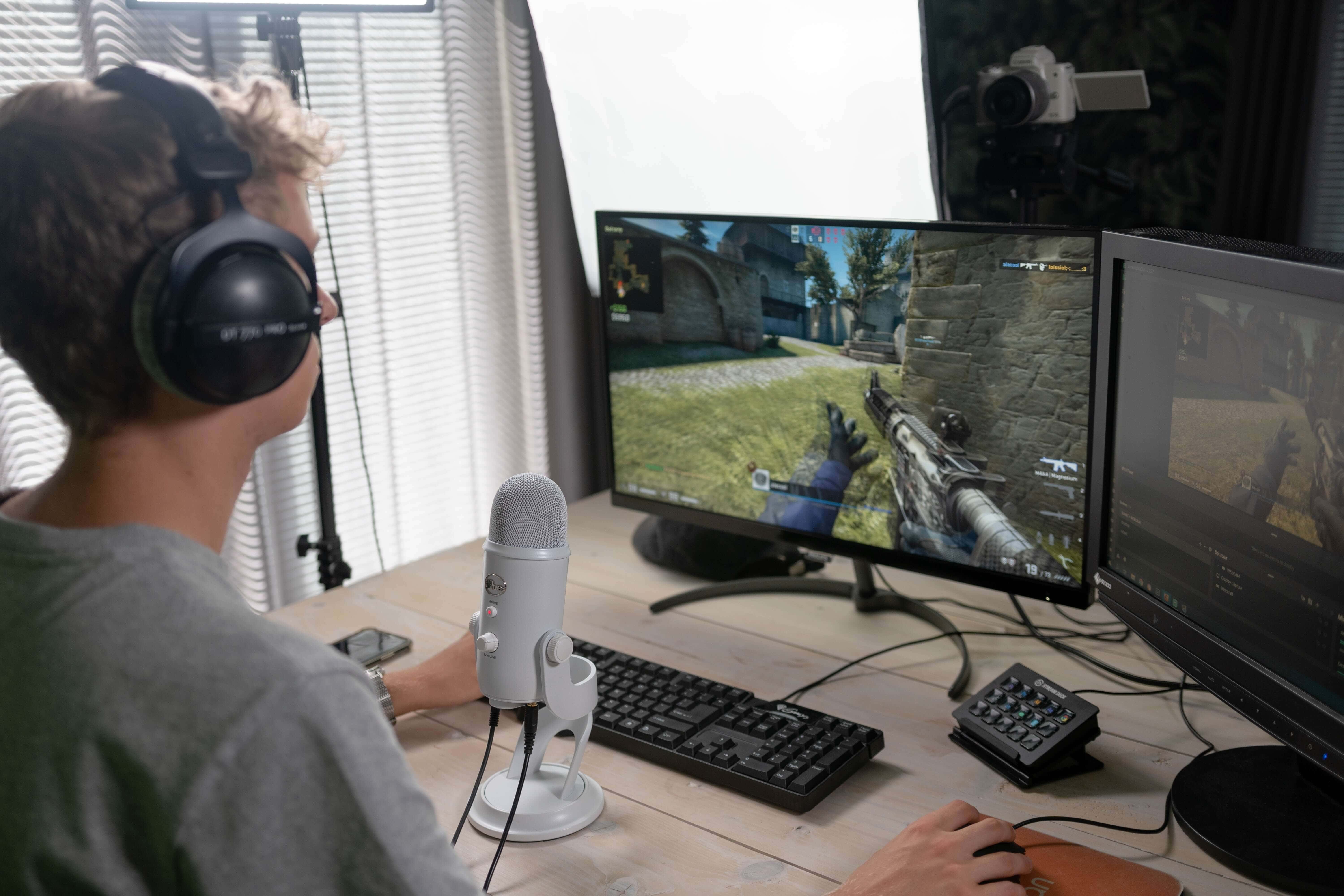
Besides that, the world of esports comes with its own dramas and controversies, which are also common in other sports. However, these stories can lead to compelling narratives that stir up interest among fans.
There are always underdog stories in professional gaming where a newer team comes from behind and wins it all. There are rivalries that emerge, leading to epic showdowns during the finals.
Esports and traditional sports are alike in many things, which is why it comes as no surprise why esports has become quite popular nowadays.
Increased Accessibility to Participants
Perhaps the second primary reason why many people today are taking part in esports is because of how accessible it is. With competitive gaming, you don’t need to spend a lot of money to join matches or tournaments. Instead, you can be part of a tournament from the comfort of your home so long as you have a gaming console or computer.
Another advantage it offers is that you can play any time you want. Compared to traditional sports, where you’ll need specific equipment, location, and team, esports lets you take part with fewer requirements.
Many users also found that gaming allows them to succeed even if they lack the physical ability and traits to succeed in traditional sports. In regular sports, you need to be in good shape and have a certain body build to be successful, which isn’t the case in esports.
You Have a Plethora of Games Available
What makes esports great is that there are numerous options when it comes to playing video games. There are literally thousands of titles to choose from that you can watch or play yourself.
For instance, first-person shooter games like Counter-Strike and Call of Duty will get your adrenaline pumping with high-risk-high-reward gameplay. Meanwhile, MOBA games like Fortnite and League of Legends offer excellent ways to develop your skills working with a team.
If you don’t like playing, you have nothing to worry about. The great thing about esports is that many professional gamers are streaming their matches, so you can just sit back and enjoy watching them play.
It Allows People To Socialize
Most people also forget that gaming can also be a way to socialize, which is precisely what makes it appealing to many. Through games, people can play against each other, improve their skills, and help each other.
Today, online video games allow gamers anywhere in the world to get in touch with one another. As a result, users from all corners of the globe can log in and start playing right away, forging friendships in the digital gaming arena.
Furthermore, many esports games require players to be part of a team. Skills such as coordination, teamwork, and communication are valued in these setups, which only add to the social nature of online gaming.
Video Game Quality Has Improved Significantly
Compared to decades ago, the video games that are being played today have dramatically improved in terms of overall quality. We’ve come a long way from playing 2D games, with many developers improving the graphics, realism, and performance of games.
It’s now possible to sit in front of your television or computer and play video games for several hours without being strained due to bad graphics. There are even games that look extremely realistic and it can be difficult to discern them from actual movies.
The cutting-edge improvements in the video game industry have led to an increasing number of gamers seeking out these virtually rendered worlds that offer amazing scenery and textures. Such changes are among the key reasons why esports have become quite popular these days.
Where Are Esports Most Popular?
Want to know which places are the biggest facilitators of esports? Take a quick look below.
South Korea
Although the United States brought esports to the public, it was South Korea that truly kickstarted the entire online gaming trend. This is especially true with the many video game stars the country has produced over the past years.
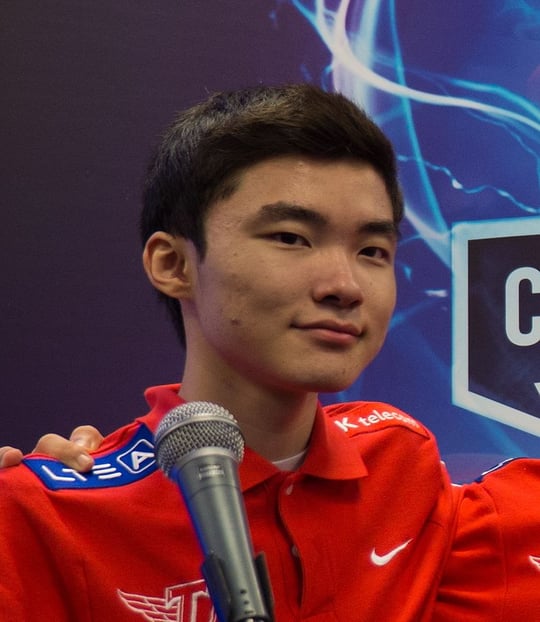 Faker at the LoL World Championship 2013 - Image: artubr
Faker at the LoL World Championship 2013 - Image: artubr
One of the most famous South Korean esports players is Faker, who has won more than $1.2 million in prize money for playing League of Legends. However, there are also other stars in the country, such as Bang and Wolf, who also play the same game. The two have combined earnings equivalent to almost $1 million.
China
China didn’t have a prevalent esports scene a decade ago but started to become a digital gaming hub after being formally recognized by its government. The nation has established its location in Hangzhou, a town dedicated to esports alone. Eventually, major cities like Wuhan, Shanghai, and Guangzhou followed suit to develop their own programs.
The country has significantly considerable growth potential when it comes to online gaming. This is especially true since over 600 million people play games on PCs and various mobile devices.
Denmark
The esports scene in Denmark has grown in popularity, especially after winning victories in various game titles. Although a small country, Denmark has produced many talented gamers to compete in the industry.
Some of the most popular Danish gamers are Bjergsen, Wunder, N0tail, and Caps.
USA
The United States won’t be missing out on its chance to grab the spotlight. The nation has multi-millionaire gaming celebrities like Sneaky and Ninja, who both have incredible achievements in the esports scene.
Players like Bugha, who snagged the title of highest-earning player in the country in 2019, are some of the most popular talents from the USA.
Sweden
European esports isn’t complete without mentioning Sweden. The country is home to many gaming talents like ZAi, s4, Olofmeister, f0rest, and KRiMZ.
What makes the esports scene in Sweden impressive is that its gamers are quite talented in showcasing their skills in different games. From titles like Quake 4 to Super Smash Bros, it’s easy to see why the country is one of the top places for esports today.
Click here to test the ggLeap client!
What Is the Biggest Esports Right Now?
There are many major esports games that can claim the title of being the biggest in the industry. However, there are also many criteria to consider, such as population, number of tournaments, and cash prizes.
If we were to sort all of these video games based on the reward money awarded during their events, Dota 2 would come out as the most popular choice.
Who Is the Best Esports Player?
When it comes to esports players, we can consider the best also based on the total amount of earnings they’ve garnered throughout their career.
Out of the many gamers in the world, the one that has the highest earnings is none other than Johan “n0tail” Sundstein from Denmark. Sundstein primarily plays Dota 2 as the current support for their team.
 Johan “n0tail” Sundstein - Image: liquipedia
Johan “n0tail” Sundstein - Image: liquipedia
The International 2018 and 2019 esports events were his biggest achievements thus far. Besides that, Sundstein also won many smaller championships, allowing him to earn a total of $7 million in championship prize money.
A few other esports players that are ranked below Sundstein are listed below with their earnings:
-
Jesse “JerAx” Vainikka ($6.4 million)
-
Anathan “ana” Pham ($6 million)
-
Sébastien "Ceb" Debs ($5.7 million)
-
Topias "Topson" Taavitsainen ($5.6 million)
Is Esports a Good Career?
Esports is one of the most versatile industries that anyone can join to make a career for themselves. It offers a wide range of work where people can earn money.
Besides being a professional gamer, the esports industry also offers jobs such as casters, commentators, and support staff such as editors, producers, and analysts.
Here are the top career options you can expect in the esports scene:
-
Professional gamer: A pro gamer is the most exciting and lucrative job profile one can land in esports. These players are highly skilled in what they do and are masters in their respective games. These skills are necessary in order to succeed as a professional gamer.
-
Game developer: People who love coding can join the esports industry by working as game developers. These individuals are responsible for programming games and turning concepts into actual products that people enjoy.
-
QA tester: A QA tester is responsible for finding and identifying bugs in applications such as video games. QA testers are tasked with detecting bugs and informing the designers of these flaws.
-
Streamer: A game streamer is one of the most important parts of the esports ecosystem. The main reason for this is that they are the ones that draw a lot of attention to specific video game titles by enticing users to watch how they play. Twitch, YouTube, and Facebook are the top platforms for streamers today.
-
Esports coach: A team or esports coach is responsible for training players to work in a team and win games through the strategies they employ. The goal of these coaches is to ensure that their group can win as much prize money as they can get from tournaments.
Conclusion
Esports started as a small and humble niche but has slowly grown in popularity over the past decades. Today, the industry has already reached the multi-billion dollar mark and is expected to become even more popular in the years to come.
If you’re interested in the esports scene, keep an eye on it, as it will undoubtedly continue to evolve in the future. In fact, many analysts are predicting that esports will take over the gaming industry altogether.
With countless users tuning in, millions of dollars in cash prizes, and worldwide recognition, it’s no surprise why esports is one of the most popular industries in the world today.


